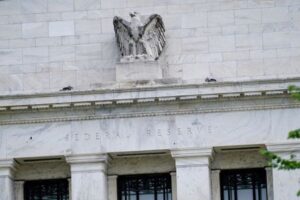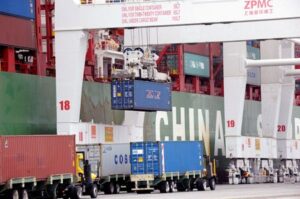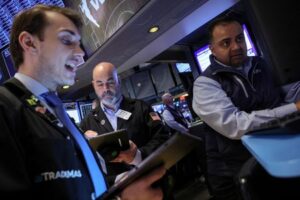By Linda Pasquini and Helen Reid
(Reuters) -A return to growth in the Americas helped Puma meet first-quarter sales forecasts and its order book for the rest of the year was looking “very good”, the German sportswear retailer said on Wednesday, helping lift its shares nearly 12%.
Revamped and newly trendy shoes from the 1970s and 80s like Puma’s Palermo and Adidas’ Samba have helped boost sales for sportswear brands at a time when consumers have cut back on spending and retailers are struggling with excess stocks.
Puma predicted growing demand for its retro Palermo shoes.
“The order book is building quarter over quarter with the second half looking very good, in particular on the Q4 side,” CEO Arne Freundt said on an investor call following Puma’s quarterly results.
He said he felt ‘very comfortable’ with market expectations of 2%-3% constant currency sales growth for the second quarter.
The upbeat comments helped dispel worries about weaker demand in the market following Hugo Boss’ cautious outlook in April, traders said, pointing to a short squeeze.
“We are only six months now in the market with the Palermo, and we see how the franchises are continuing to grow in strength month over month,” Freundt told a news conference.
Puma is increasing production of the Palermo shoes while being careful to avoid oversupply, Freundt said, echoing comments by Adidas’ CEO last week about managing the trend.
“The terrace trend is very real and is something that provides material contribution to sales,” said Felix Jonathan Dennl, analyst at Metzler Capital Markets in Frankfurt. “Puma was, I would say, late and jumped on that trend later than Adidas did.”
Retailers, where Puma makes most of its sales, are still working through excess inventories, but the company sees further improvement in the second quarter after Puma’s inventories fell by 16.8% compared with March 31 last year.
Currency-adjusted sales rose 0.5% to 2.1 billion euros ($2.26 billion), in line with analysts’ forecasts, as sales in the Americas grew for the first time in four quarters to 790 million euros, partly due to improvement in the key U.S. market.
Puma is investing in advertising to boost its brand, and is on a drive to improve its credentials as a performance sportswear maker, particularly in running where it has worked on its shoe technology.
At last month’s Boston Marathon, Puma-sponsored athlete Edna Kiplagat came third, marking the brand’s first podium spot at a World Marathon Major in decades.
Competition is fierce in running, however, with newer brands like On Running and Hoka taking market share from the likes of Nike and Adidas.
“The running category is as crowded as ever,” Morningstar analyst David Swartz said, adding that Puma has a lot of work to do as it has a small market share.
($1 = 0.9310 euros)
(Reporting by Linda Pasquini and Helen Reid, additional reporting by Isabel Demetz and Danilo Masoni; Editing by Philippa Fletcher, Alexander Smith and Elaine Hardcastle)





